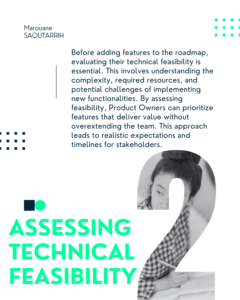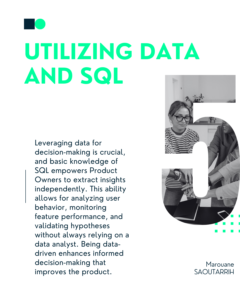In today’s technology-driven world, the role of a Product Owner extends far beyond managing backlogs and writing user stories. To bridge the gap between business goals and technical execution effectively, Product Owners need a foundational understanding of key technical concepts. This knowledge empowers them to make informed decisions, communicate better with development teams, and steer products toward success.
Here are six technical essentials every Product Owner should know, along with clear examples to illustrate their importance.
1. Navigating Technical Trade-offs

Understanding Trade-offs: Product development often involves choosing between multiple technical solutions, each with its own set of benefits and drawbacks. Being able to navigate these trade-offs helps you balance technical possibilities with business needs.
Example: Imagine you’re working on a messaging app and need to decide between implementing end-to-end encryption or server-side encryption. End-to-end encryption offers maximum privacy, as messages can only be read by the sender and receiver. However, it complicates features like message search or backup, because the server can’t read the messages. Server-side encryption is easier to manage and allows for more features but is less secure. Understanding these options enables you to make a choice that aligns with your users’ privacy expectations and your product’s feature set.
2. Assessing Technical Feasibility

Evaluating Features: Before adding a new feature to the roadmap, it’s crucial to assess its technical feasibility within your time, budget, and resource constraints.
Example: Suppose you’re considering adding voice recognition to your app to enhance accessibility. Assessing technical feasibility involves understanding if your team has experience with voice recognition technology, whether existing APIs or services can be leveraged, and what the integration would entail. If the technology is too complex or costly, you might opt for a simpler solution like integrating with existing voice-to-text services, ensuring you still meet accessibility goals without overextending resources.
3. Managing Technical Debt

Recognizing Technical Debt: Technical debt accumulates when quick fixes are chosen over more sustainable solutions. While it might speed up initial development, it can lead to increased maintenance costs and slower feature rollouts in the future.
Example: Your team has been pushing out features rapidly to stay ahead of competitors, often skipping code reviews and tests. As a result, the codebase becomes cluttered with redundant or inefficient code, leading to bugs and slow performance. By acknowledging this technical debt, you can prioritize refactoring and code optimization in your backlog, which will improve product stability and reduce long-term development costs.
4. Understanding Debugging Processes

Handling Bugs Efficiently: Bugs are inevitable, but understanding how debugging works helps you triage issues effectively and communicate clearly with developers.
Example: Users report that images aren’t loading in your app after a recent update. Knowing the basic architecture, you recall that the update included changes to how the app retrieves images from the server. You can inform the development team that the issue might be related to the new image-loading module, helping them focus their debugging efforts and resolve the problem more quickly.
5. Utilizing Data and SQL

Data-Driven Decisions: Access to real-time data is vital for making informed decisions. Knowing basic SQL allows you to query databases directly, gaining insights without always relying on a data analyst.
Example: You’re curious about how a new feature is performing across different user segments. By running simple SQL queries, you can extract data showing usage patterns among various age groups or geographic locations. This information might reveal that the feature is popular with younger users but not with older ones, informing your marketing strategies or leading you to adjust the feature for broader appeal.
6. Overseeing Delivery Processes

Understanding Deployment Pipelines: Awareness of the software delivery process—including development, testing, staging, and production environments—enables you to coordinate releases effectively.
Example: You’re planning a major feature release aligned with a marketing campaign. Knowing that code must pass through various stages—like code review, automated testing, and staging environments—before reaching production, you can set realistic deadlines and coordinate with both the development team and marketing department. This ensures that the feature is released smoothly and on schedule, maximizing the impact of your campaign.
In Conclusion
While you don’t need to write code, understanding these technical essentials enhances your ability to lead product development effectively. By grasping concepts like navigating technical trade-offs, assessing feasibility, managing technical debt, understanding debugging, utilizing data, and overseeing delivery processes, you become a more effective bridge between your development team and business stakeholders. This not only improves communication but also contributes to delivering a successful product that meets both user needs and business objectives.


